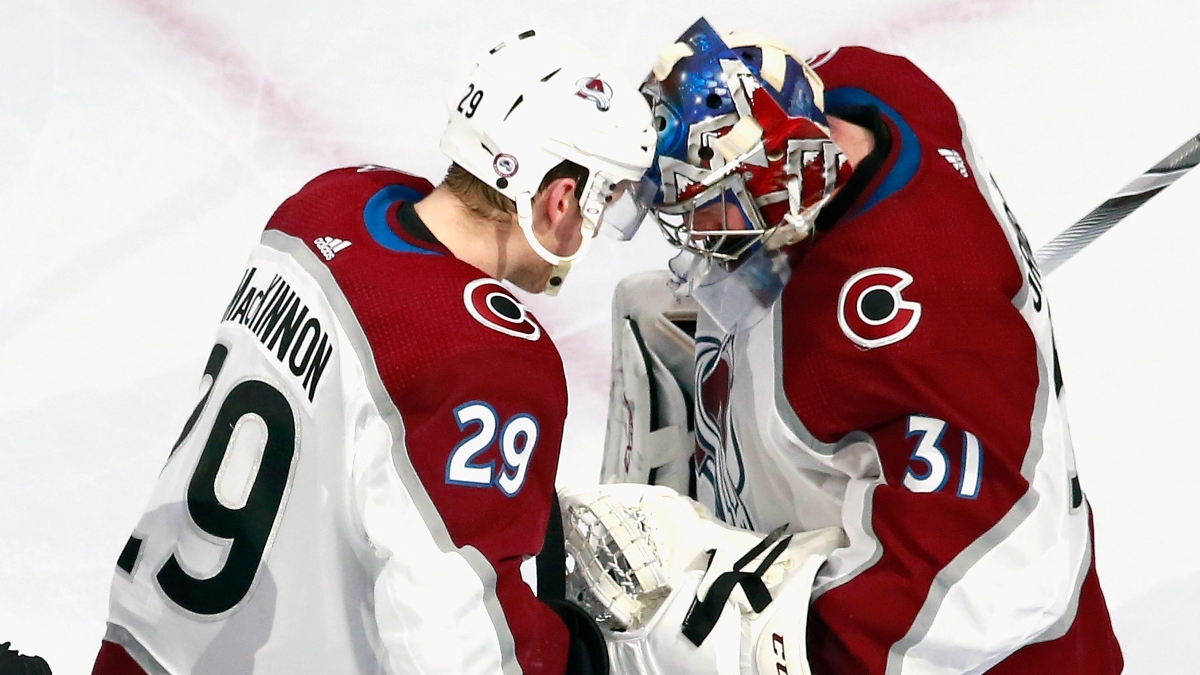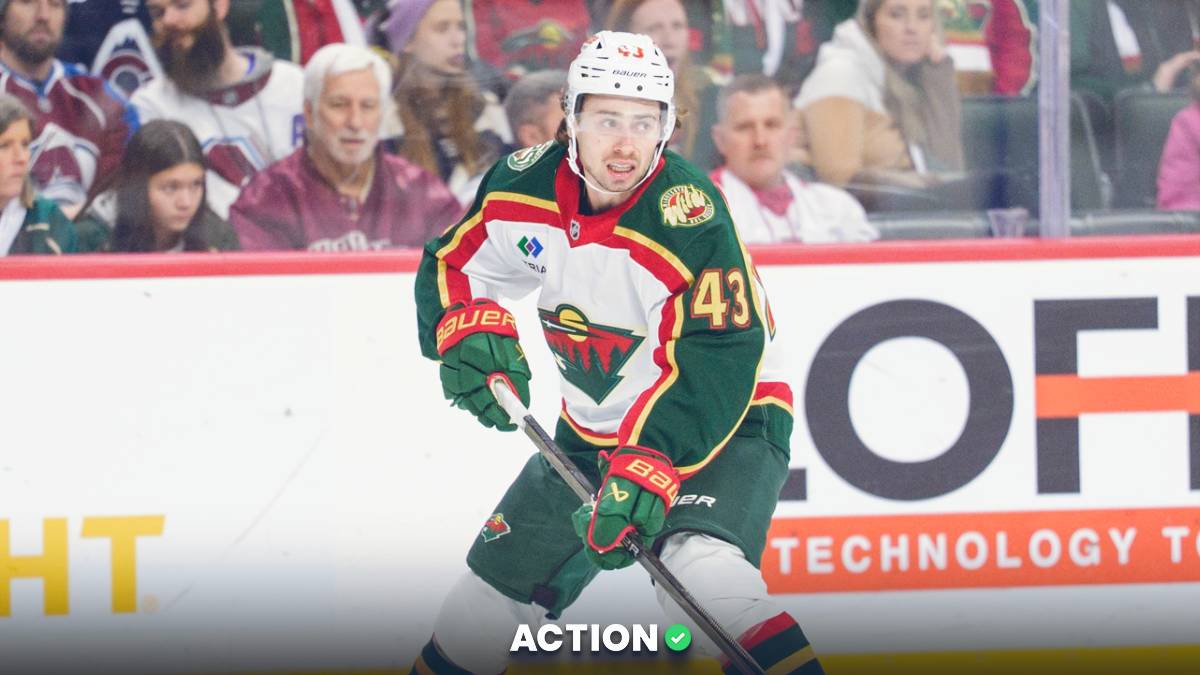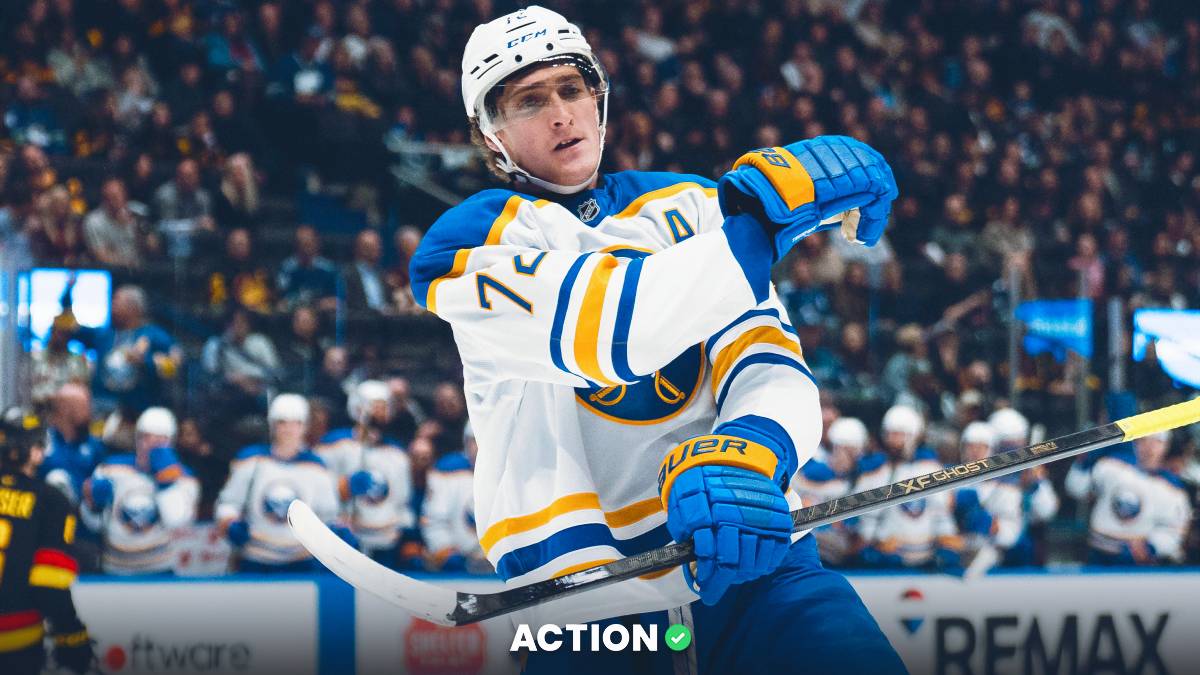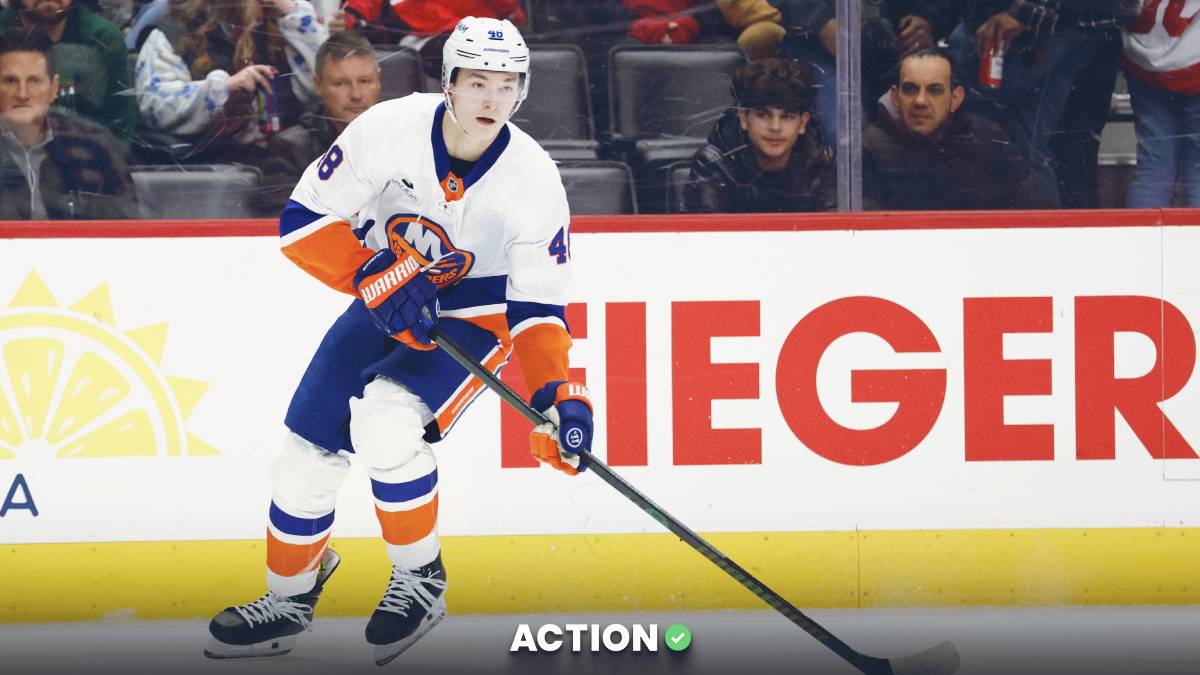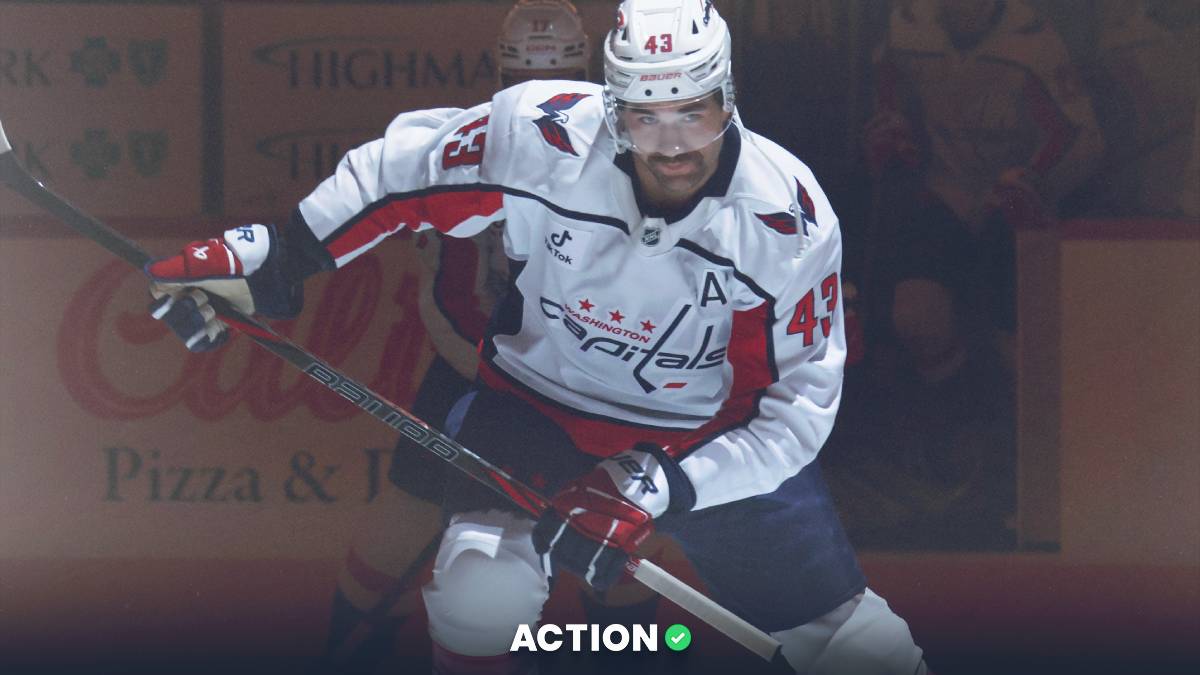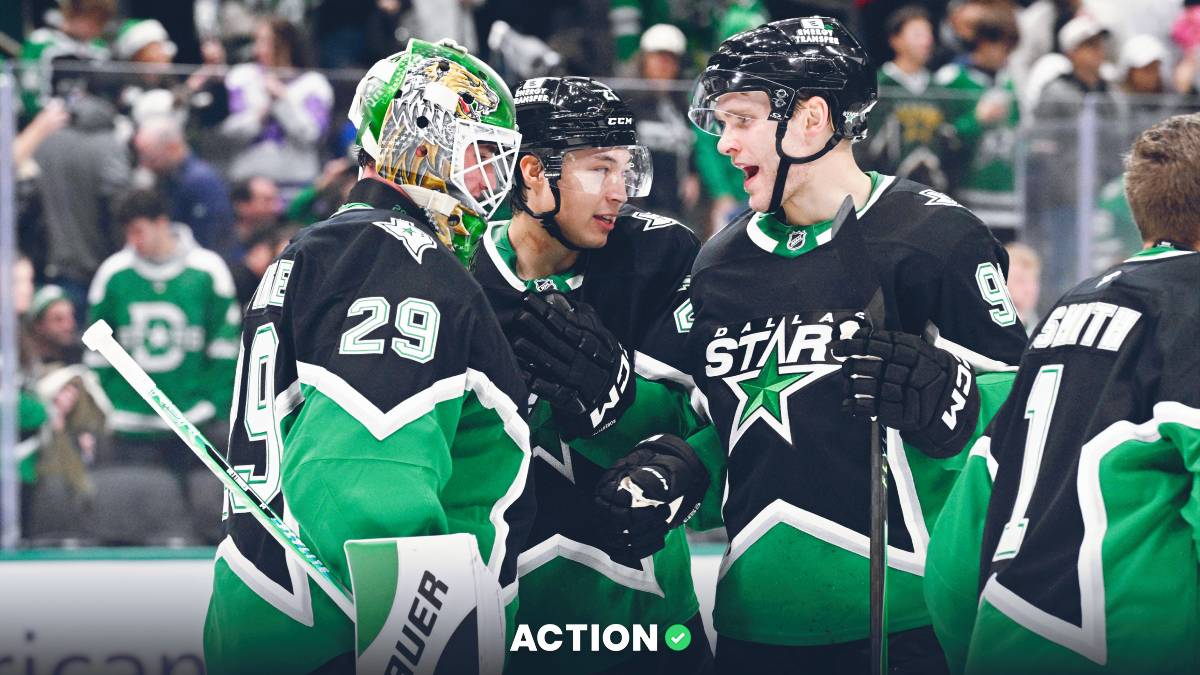- The Avalanche the their Stanley Cup Playoff series against the Coyotes, 3-1, heading into Game 5.
- NHL betting analyst Sam Hitchcock analyzes Wednesday's matchup and makes his pick.
Avalanche vs. Coyotes Odds
| Coyotes Odds | +180 [BET NOW] |
| Avalanche Odds | -215 [BET NOW] |
| Over/Under | 5.5 [BET NOW] |
| Time | 5:30 p.m. ET |
| TV | NBCSN |
Odds via DraftKings. Get up to a $1,000 sign-up bonus at DraftKings today or see more offers and reviews for the best online sportsbooks.
The year 2020 is signaling a tectonic shift in the league’s hockey powerhouses. The Colorado Avalanche appear to be making their ascendance. Colorado plays a stimulating brand of hockey with a roster replete with skill in every facet.
Ipso facto, the Avs are clobbering a talented but flawed Arizona Coyotes squad. Arizona goaltender Darcy Kuemper has been valorous in net, but the bombardment of shots has not abated.
The Avs’ moneyline of -215 on DraftKings is a brutal price. A wise bettor needs all the available information, therefore I attempt to map out a way for Arizona to win below.
However, a person may lose a piece of their soul by betting on Arizona. This series, and the one featuring Vegas against Chicago, are the last two offering low-hanging fruit before the second round begins with all the comically inferior teams eliminated.
I think the only way to go is to bet the Avs’ puck line, which is +125 on DraftKings.
Colorado Avalanche
Emulating Mick Jagger, the Coyotes are living on borrowed time. That they have managed to stave off a sweep is itself an achievement. By every indication, the series has not been close.
At 5-on-5, the Avalanche have outshot the Coyotes by 55 shots. Colorado has won the expected goals battle in every game, and in two of the four games they offered an expected goals percentage of 68.99% and 75.78%.The Colorado stars are unfettered.
Expected goals (also known as xG) is a predictive statistic that gives an indication of whether results are based on sustainable factors like a steady creation of scoring chances, or whether it is down to aspects such as shooting luck or outstanding goaltending.
Simply put, an expected goals rate (xGF%) above 50% is considered good because it means a team is creating the majority of the scoring chances. Anything below 50% is usually a sign that a team is struggling to control play.
xG numbers cited from Evolving Hockey.
In the series, Avs defenseman Cale Makar and forward Nathan Mackinnon have a 3.11 and 3.07 expected goals per 60 minutes, respectively.
Gabriel Landeskog has submitted another dominant two-way effort, as Arizona has an expected goals of 1.26 when the captain is on the ice.
Despite starting with different line combinations in Game 1, Avs coach Jared Bednar decided to use the super line of Landeskog, MacKinnon and Mikko Rantanen to start Game 2.
The trio had an underwhelming performance in that contest, but were virtually unstoppable in Games 3 and 4, combining for 19 shots on goal and six against at 5-on-5.
In the last two games, they manufactured a total of 43 shot attempts as a line. When Arizona has tried to use its shutdown pair of Niklas Hjalmarsson and Alex Goligoski against the Avs’ star line, the Arizona defensemen were lucky that Kuemper parried a squall of shots. What makes Colorado a seemingly insuperable offense is the depth they have at forward.
Against Arizona, fourth-line forward Matt Calvert has five high-danger chances and his linemate Pierre-Edouard Bellemare has four. The third forward on their line, Matt Nieto, leads the team in this series with nine 5-on-5 shots.
Andre Burakovsky leads the team with two 5-on-5 goals. Burakovsky’s latest goal registered right as the power play was expiring, but the Avalanche’s man advantage has also started to heat up, as they potted three on the power play in Game 4.
The Avs’ transition offense is superlative, but it is via less celebrated modes of offense like the forecheck that Colorado forces weaker opponents like Arizona into extremely difficult situations.
For instance, the Coyotes have a real predicament on breakouts. The Avalanche are probably the fastest team in the NHL at re-entering the offensive zone after the puck has been chucked into the neutral zone. But they also are arriving faster than Arizona to the spots where the Coyotes’ forwards should be stationed as the defenseman’s outlet.
This leads to a catch-22 for the Coyotes’ defensemen on retrievals. Swing the puck up the boards into the likely clutches of a Colorado skater, or hope an indirect pass doesn’t lead to Cale Makar or Nathan MacKinnon swooping into the offensive zone ready to make the strong-side Arizona defenseman look wooden.
The best possible solution is having the Coyotes’ forwards sink deep, really deep, into their own zone and make sure there is a release-valve skater who is not blanketed by an Avalanche skater.
Arizona Coyotes
The Coyotes have two key objectives: Keep the Avs’ skaters in front of them and make sure they have enough manpower in position to contain the Avs’ sieges. The first four goals of Game 4 came off counterattacks and the Avs’ power play. The Coyotes’ incautious puck management and obstreperous behavior sabotaged these objectives, sometimes resulting in goals.
Offensively, Arizona needs to ugly it up and try to force Colorado to defend the forecheck and cycle. Unfortunately for the Coyotes, the Avs have extremely mobile defensemen, so trying to retrieve the puck or force turnovers against them is very difficult.
But here is the worst part: When the Coyotes’ defensemen get too aggressive at trying to keep pucks in the offensive zone or by pinching, the Avs can prey on that assertiveness and turn the sequence into an odd-man rush.
The majority of the Coyotes’ offensive creation on the forecheck and cycle must come from the forwards. In this respect, the Game 3 goal by Derek Stepan was ideal.
The Coyotes’ forwards engineered the entire chain of events, and Stepan simply won the position battle against Joonas Donskoi in the low slot. Arizona’s other tally in that game came off a Colorado mental mistake, which isn’t particularly illuminating. Really, the Coyotes should strive to make the game boring.
Try to establish territorial advantage, and if they can’t, recede and try to congest the neutral zone so Colorado is forced to dump and chase.As detailed above, the Coyotes know the Avs are extremely adept at forcing turnovers on their zone exits, and on the Avs’ cycle they seamlessly interchange forwards and defensemen, which has caused extreme confusion and disarray for the Coyotes’ defensive coverage.
But forcing them to take point-blank shots from the top of the circle or the off-slot is preferable to what Colorado creates in transition.
My Pick
Betting on the Avalanche moneyline and puck line share the same concern: Arizona’s Kuemper. Through four games, there really isn’t any disagreement about who is the better team.
Even at +180, what makes Arizona so difficult to take a flyer on is that Kuemper can be the best player in the game and Arizona can still lose.
Colorado flashed its explosive offense in Game 4 and there were glimmers of it against Dallas in the round robin. A bet on the Avs is the way to go. It is just a question of one’s risk tolerance.
[Bet the Colorado Avalanche at DraftKings and get a $1,000 sign-up bonus.]


